The Goblin Shark looks like it swam straight out of a nightmare—and we love it for that.
With a snout like a sword, jaws that launch like a spring trap, and a face only a deep-sea horror movie could dream up, this creature is pure oceanic oddity.
It’s not just rare—it’s weird. Like, “what-is-that-and-why-does-it-exist” weird.
Lurking thousands of feet below the surface, the Goblin Shark lives in the shadows, far from the reach of sunlight—or logic.
And yet, every now and then, it shows its face. And when it does, jaws drop (literally and figuratively).
These 15 facts will take you deep into the strange, stretchy, jaw-snapping world of one of the ocean’s most bizarre predators.
Welcome to the freaky side of the sea.
A Living Fossil
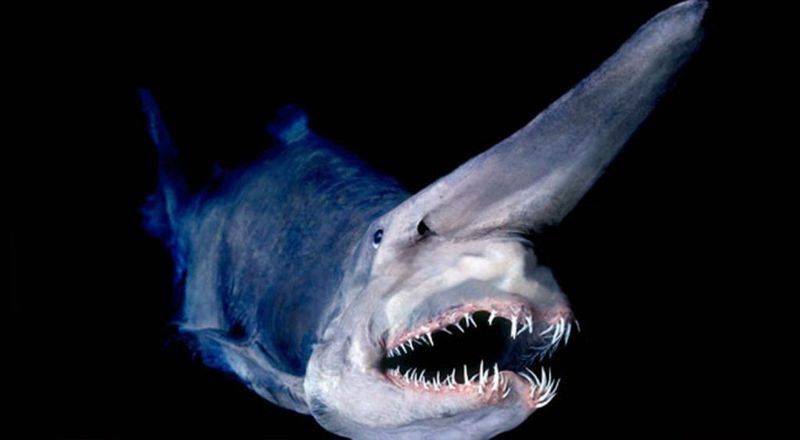
The Goblin Shark is often referred to as a living fossil due to its ancient lineage, dating back around 125 million years. Its unique appearance with an elongated, flattened snout and protruding jaws sets it apart from other sharks.
These features are not just for show; they play a crucial role in its hunting strategy. The shark’s coloration, a muted pinkish hue, adds to its ancient aura, making it appear otherworldly.
This ancient lineage has remained virtually unchanged, surviving epochs and extinctions that wiped out countless other species.
Unique Jaw Mechanism
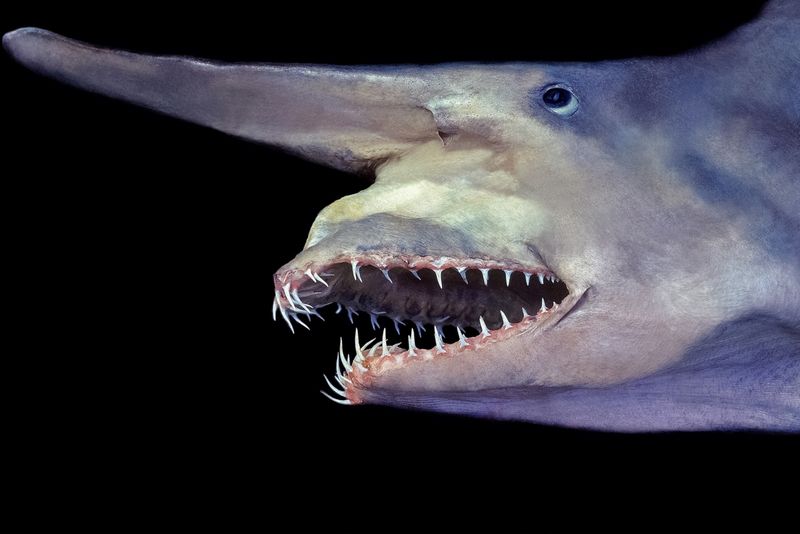
Unlike any other shark, the Goblin Shark has an extraordinary jaw that can protrude dramatically forward when capturing prey. This elastic, slingshot-like mechanism is a marvel of evolutionary engineering.
It allows the shark to snatch prey with precision and speed, making escape nearly impossible. This feature is particularly useful in the dark depths of the ocean, where visibility is low.
As it closes in, the jaws extend, ensuring that even the swiftest prey falls victim. This specialized hunting technique showcases nature’s ingenuity in its purest form.
Deep-Sea Dweller
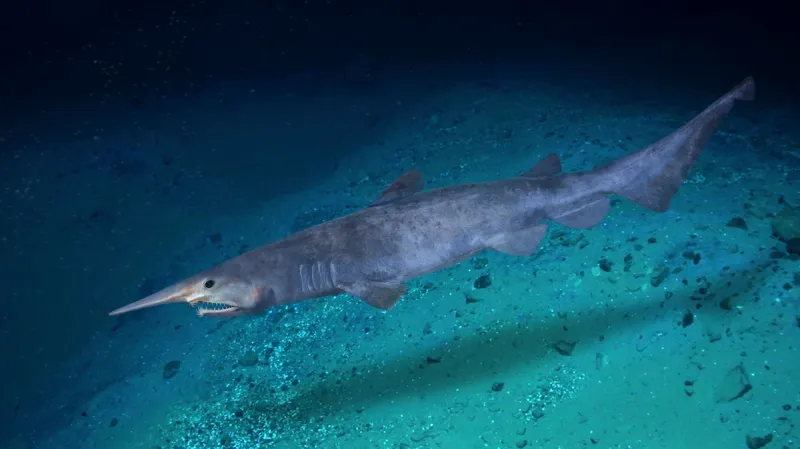
Residing in the dark depths of the ocean, typically deeper than 100 meters, the Goblin Shark is a true deep-sea dweller. This habitat provides a haven from predators and allows it to hunt in peace.
The pressure in these depths is immense, shaping the shark’s unique physiology. Its slow-moving nature suits the high-pressure, low-light environment perfectly.
This elusive creature is rarely seen by humans, adding to its mystique. Scientists often rely on trawling methods to study this enigmatic shark, as it lurks in the ocean’s shadows.
Curious Snout Function
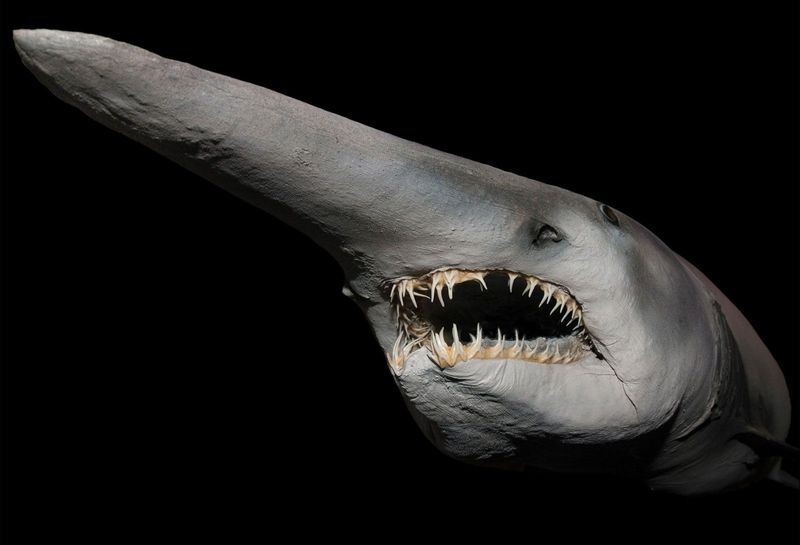
The Goblin Shark’s long, flat snout is not merely an oddity; it serves as a vital sensory tool. Packed with electroreceptors, the snout helps detect the faint electric fields produced by other marine animals.
This adaptation is essential for navigation and hunting in the pitch-black waters of the ocean depths. The snout’s sensitivity allows the shark to sense even the slightest movement, giving it an edge over its prey.
It’s an evolutionary response to the challenges of surviving in an environment where sight is virtually useless.
Unique Coloration
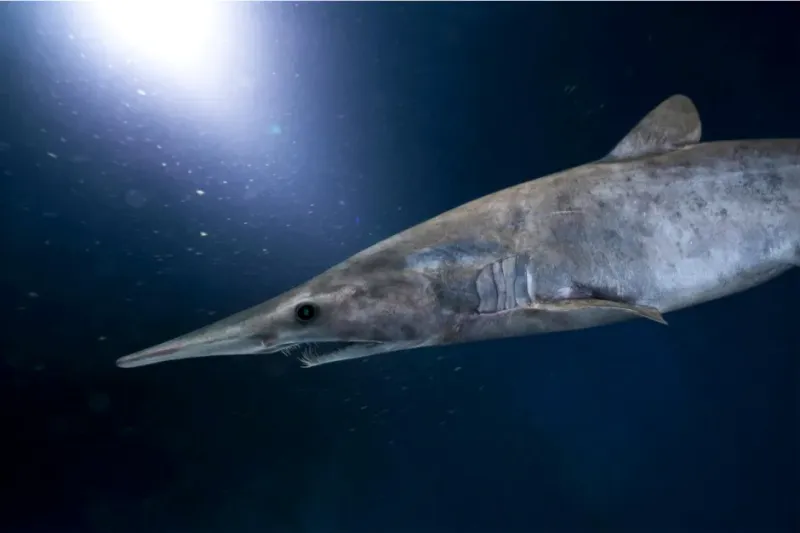
The Goblin Shark’s translucent skin gives it a distinctive pinkish hue, a result of visible blood vessels beneath the skin. This coloration is unique among sharks and contributes to its ghostly appearance.
Unlike the dark, menacing looks of other sharks, the Goblin Shark’s skin seems almost ethereal. This feature may play a role in camouflage, helping it blend with the deep sea environment.
The shark’s unusual color adds another layer to its mystique, making it an object of fascination for marine biologists worldwide.
Elusive Nature
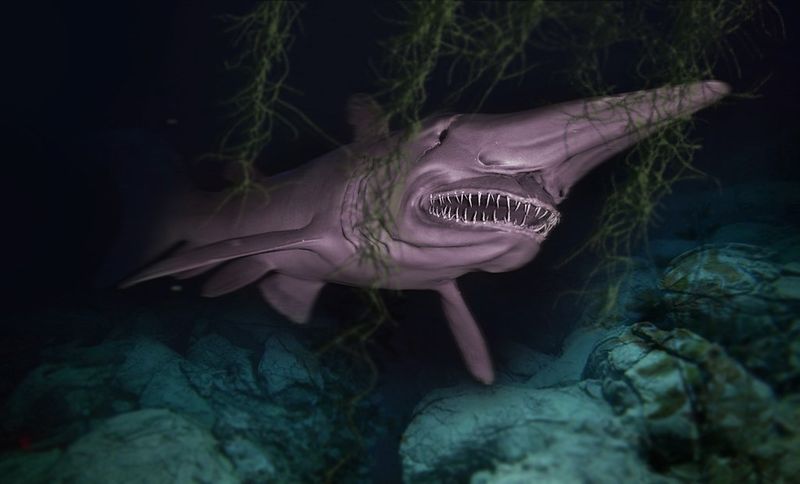
Hardly ever seen by humans, the Goblin Shark’s elusive nature makes it a subject of intrigue. Most of what we know comes from accidental captures by deep-sea trawlers.
This scarcity of sightings adds to the shark’s enigmatic reputation. Its preference for deep waters away from human activity ensures that it remains largely unobserved in its natural habitat.
Each sighting is a rare event, providing valuable insights into its behavior and lifestyle. It’s a reminder of how much remains unknown about the ocean’s hidden residents.
Slow Swimmer

Unlike its swift relatives, the Goblin Shark is a slow swimmer, reflecting its adaptation to the deep sea. This leisurely pace conserves energy in an environment where food can be scarce.
A slow approach also aids in sneaking up on unsuspecting prey. The shark’s sluggish movements are deceptive; when it comes to capturing food, it can react with surprising speed, thanks to its specialized jaw.
This contrast between its usual pace and hunting agility highlights the Goblin Shark’s unique evolutionary path.
Wide Distribution
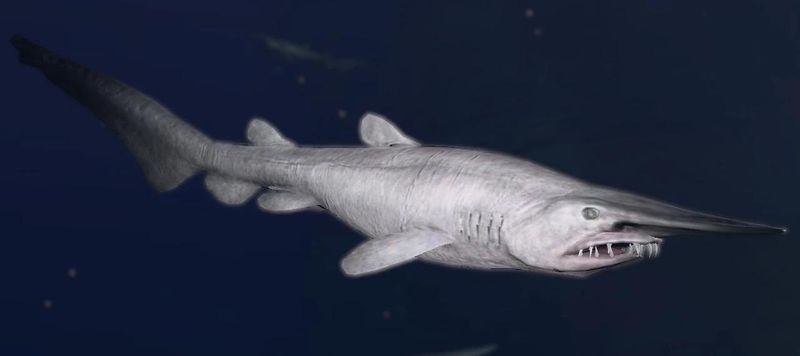
Despite its rarity, the Goblin Shark has a wide distribution, found in various oceans around the world. Sightings have been recorded in the Atlantic, Pacific, and Indian Oceans, particularly in deep-sea regions off the coasts of Japan, South Africa, and Portugal.
This widespread presence indicates a successful adaptation to different deep-sea environments. While sightings are uncommon, the shark’s broad habitat range suggests a resilience that has allowed it to survive in diverse conditions, preserving its ancient lineage across geological epochs.
Unpredictable Behavior
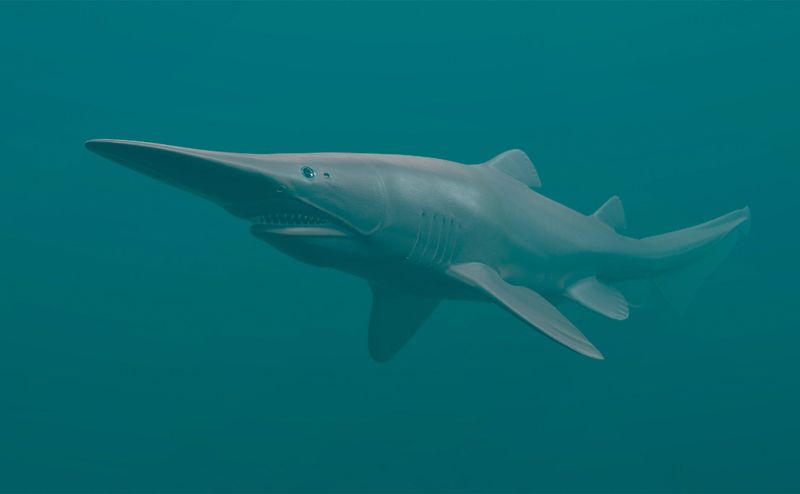
The behavior of Goblin Sharks remains largely mysterious due to their rarity and deep-sea habitat. Observations suggest they exhibit unpredictable and erratic movements.
This unpredictability could be a strategy to confuse prey or avoid detection by predators. The lack of consistent behavioral patterns challenges researchers, as every new observation can defy expectations.
Their secretive lifestyle further complicates studies, leaving much of their behavior a puzzle for marine scientists to piece together, adding to their allure as subjects of research.
Mysterious Reproduction
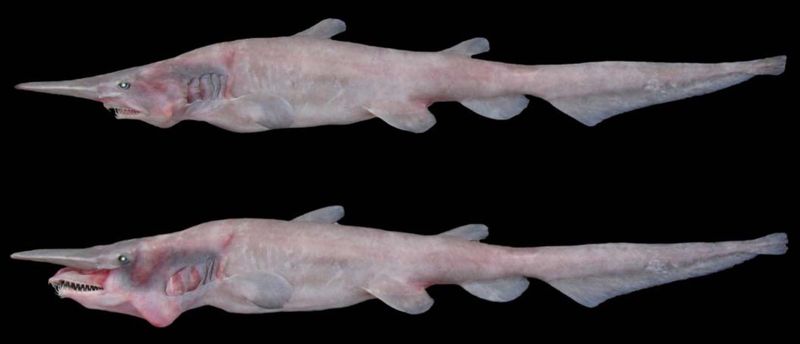
The reproductive habits of the Goblin Shark are shrouded in mystery. Few details have been confirmed, with much of what we know based on rare observations.
It’s believed that they are ovoviviparous, with embryos developing inside eggs that remain within the mother’s body. The exact breeding grounds or nursery areas remain unknown, hidden in the ocean’s depths.
This lack of information makes every new discovery about their reproduction a significant milestone. The mystery surrounding their breeding habits continues to intrigue marine biologists.
Diet and Prey
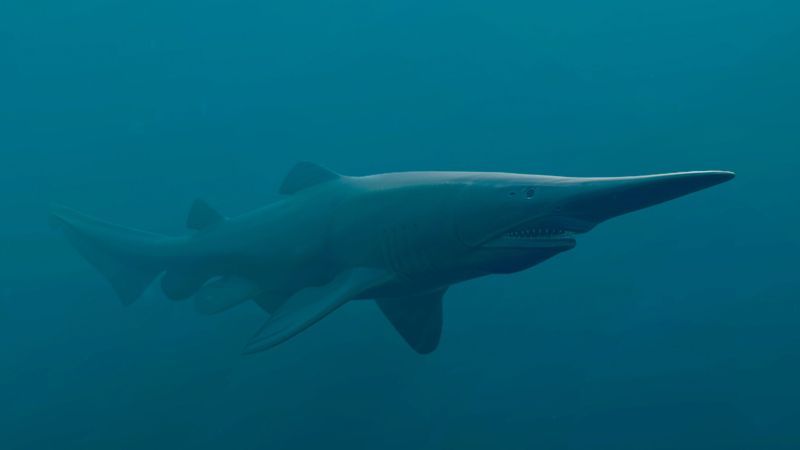
Goblin Sharks feed primarily on deep-sea fish, cephalopods, and crustaceans. Their diet reflects the biodiversity present in the ocean’s depths.
The shark’s specialized jaw allows it to quickly capture prey, which often includes squid and other elusive creatures. Its feeding habits provide insight into the deep-sea food web and the ecological role the Goblin Shark plays in its environment.
The variety in its diet highlights the adaptability of this ancient predator, capable of exploiting the resources available in its challenging habitat.
Lack of Natural Predators
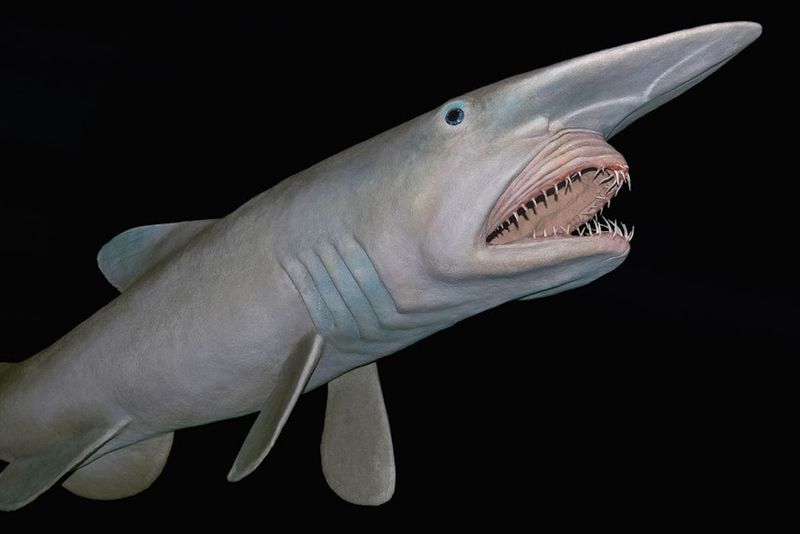
Occupying the deep sea, the Goblin Shark has few natural predators. Its remote habitat provides a sanctuary from most threats, allowing it to thrive with little fear of being hunted.
This lack of predation pressure may contribute to its slow, deliberate lifestyle. The shark’s unique adaptations make it a formidable predator in its own right. As a result, it occupies a niche where it can focus on hunting rather than hiding.
This autonomy highlights the balance of power in the deep-sea ecosystem, where the Goblin Shark reigns largely unchallenged.
Historical Discoveries
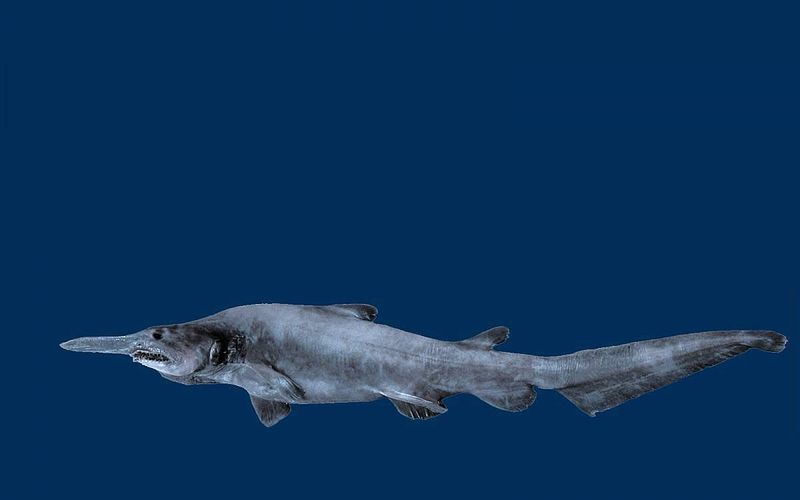
The first Goblin Shark was discovered off the coast of Japan in the late 19th century. Its unique appearance captured the attention of scientists and sparked myths and legends.
Early drawings and descriptions reveal the fascination and mystification that accompanied its discovery. These historical records provide a glimpse into the past, showing how perceptions of this remarkable creature have evolved.
The initial confusion and intrigue surrounding its discovery continue to echo in scientific circles, reflecting the shark’s enduring allure.
Symbolic Significance
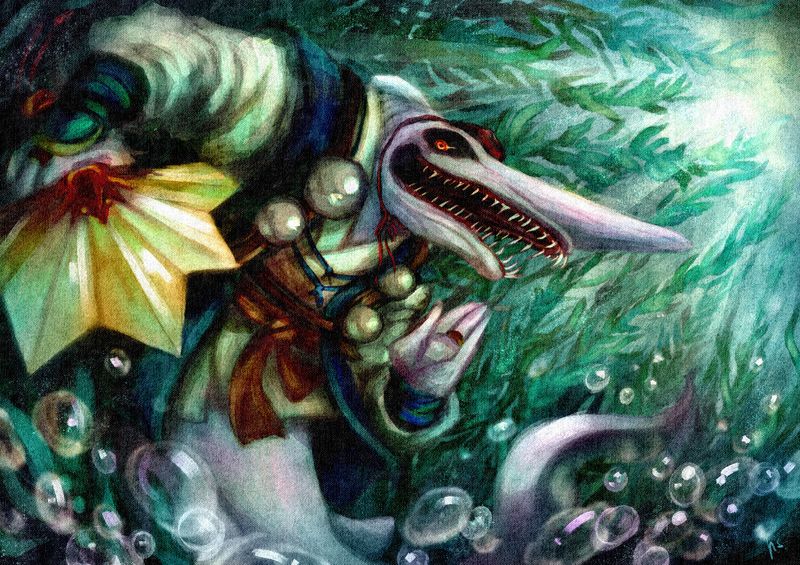
In Japanese culture, the Goblin Shark is known as ‘Tenguzame,’ referencing the mythical Tengu creatures known for their long noses. This cultural connection adds a layer of intrigue to the shark’s story, blending marine biology with folklore.
The symbolism highlights the interplay between nature and myth, as the shark’s distinctive snout mirrors the Tengu’s appearance.
This cultural significance enriches our understanding of how humans relate to and interpret the natural world, weaving the Goblin Shark into the tapestry of local lore and legend.
Conservation Status
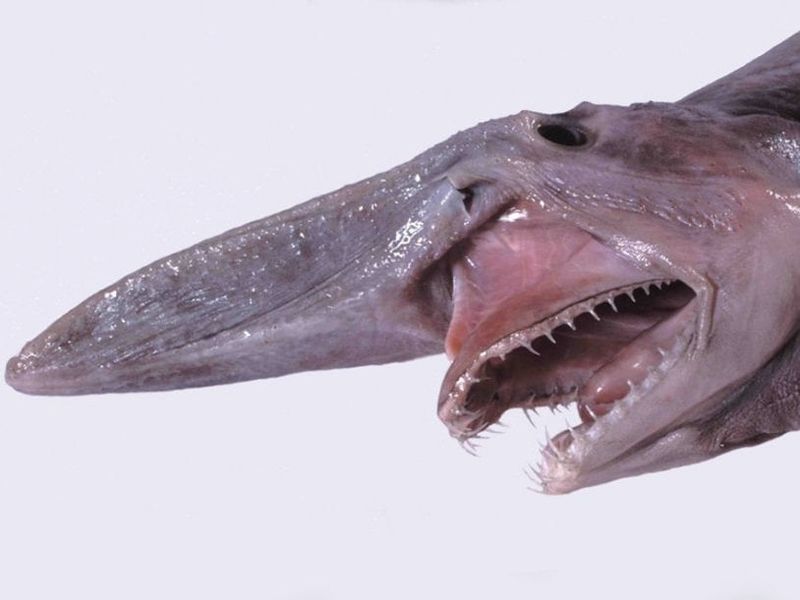
Though not currently listed as endangered, the Goblin Shark’s elusive nature makes it difficult to assess its population status accurately. Conservationists stress the importance of monitoring deep-sea ecosystems to ensure the survival of such unique species.
The shark’s rarity and specialized habitat necessitate careful consideration of environmental impacts, such as deep-sea fishing and habitat disturbance.
Protecting these lesser-known creatures is crucial for maintaining biodiversity and understanding ecological dynamics. Ongoing research aims to safeguard the Goblin Shark for future generations.

